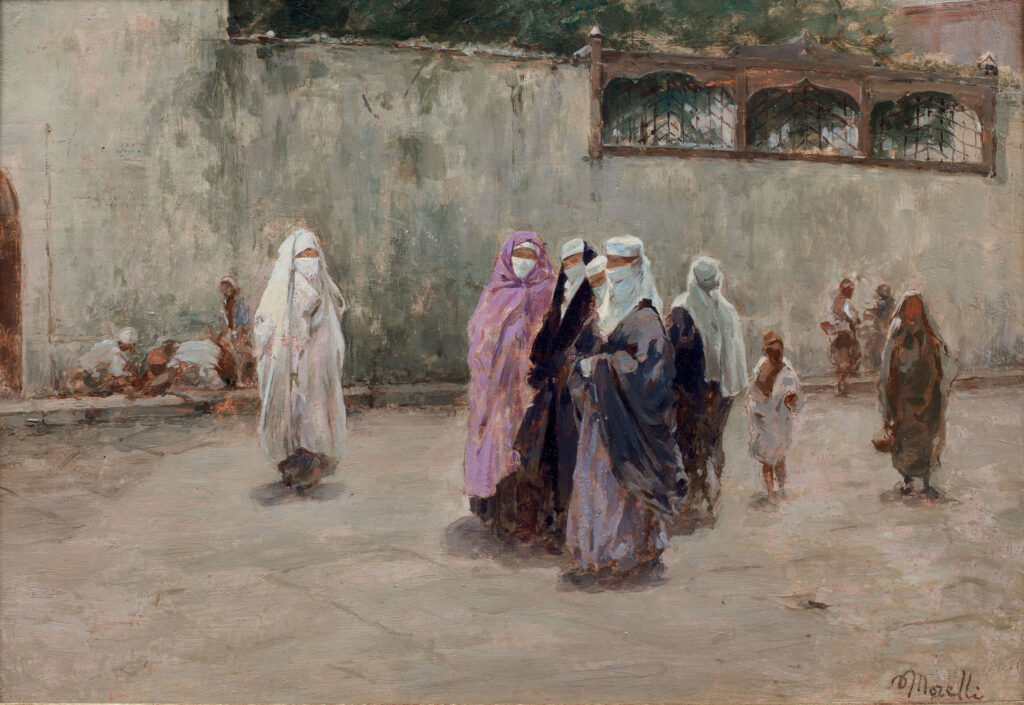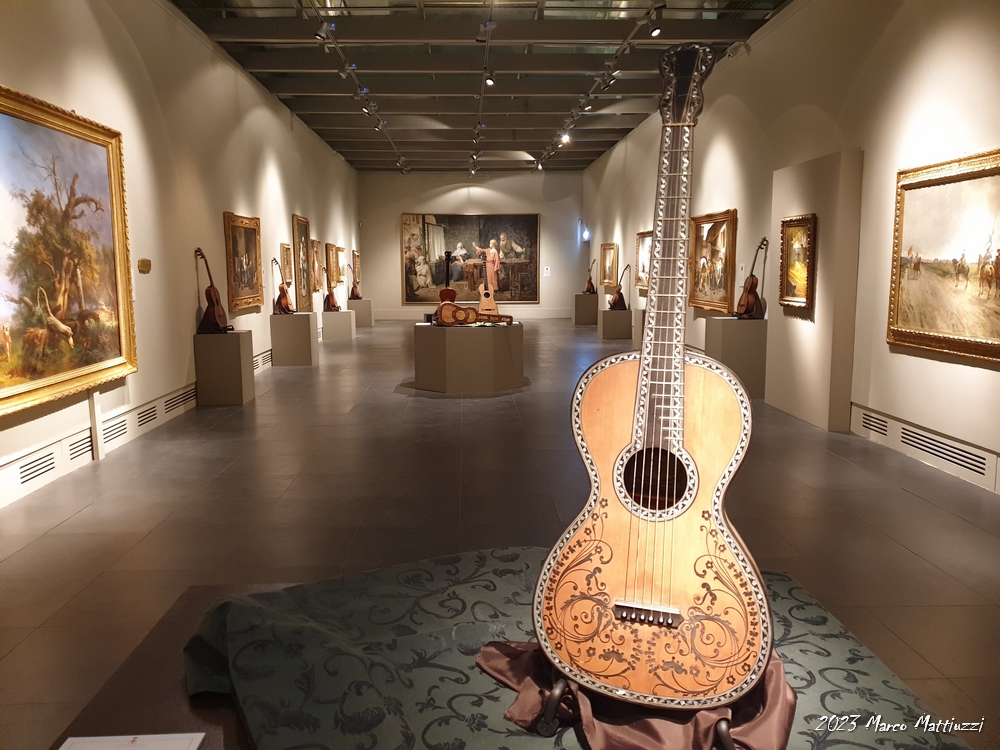As part of the celebrations dedicated to the memory of Maestro Angelo Gilardino, whose work has left an indelible mark on the guitar repertoire, the exhibition “The Singing Wood” emerges as an event of special significance. Open until January 8, 2024, in Vercelli, it is not just a display but a tribute to the fusion of craftsmanship and artistic expression, a blend that Gilardino masterfully interpreted through the strings of his guitar.
In this context, Federico Vinea’s “Portrait of a Lady with a Veil” takes on an even deeper connotation. The piece, with its refined depiction of fabrics and gazes, speaks for an era where the art of painting and luthiery conversed through a quest for perfection and a passion for detail. Thus, the exhibition transforms its halls into a temporal bridge, directly connecting viewers with the 18th and 19th centuries, transitional periods in which our artistic heritage was shaped.
The veil adorning the figure in Vinea’s canvas, like the strings of a guitar, seems to vibrate with an invisible melody, suggesting that visual and musical arts share a subtle yet powerful universal language. The exhibition, therefore, honors not only Maestro Gilardino but also art that, in all its forms, transcends the boundaries of time and space, leaving an eternal imprint on the history of human culture.
The veil, painted with such mastery that it appears ethereal and tangible at once, wraps the lady in a shroud of mystery, almost shielding her from the outside while revealing her serene expression. Vinea’s choice of subject and technique evoke the sensibility of a society that, in its gradual shift towards modernity, did not abandon its preference for beauty and finely crafted work, values shared in both painting and luthiery.
Vinea’s art is set in a period of cultural fervor, where the aesthetics of sound and sight intersect. The “The Singing Wood” exhibition, by including this portrait, celebrates this intersection, proposing a dialogue between the vibrating strings of instruments and the vibrant colors of the canvas. The lady portrayed could almost be imagined listening to a chamber piece performed on one of the instruments in the exhibition, in a harmonious continuity that binds the arts.
In the context of the exhibition, Vinea’s portrait is not just an artwork to be contemplated but an element of a broader discourse on the arts in their ability to express and evoke emotions, to tell stories without words, to enchant. And just as the wood of the instruments, under the skillful hands of the luthier, comes to life with music, so the canvas under Vinea’s touches animates with life, gazes, and silent conversations.
This synergy between sound and color, between luthiery and painting, is particularly poignant in this exhibition in Vercelli, where visitors are invited not just to observe but to feel, to immerse themselves in an era where art was experienced and perceived with all senses. “The Singing Wood” thus becomes not just an exhibition, but an experience, a sensory journey that, through Vinea’s portrait, allows us to hear the subtle sound of beauty that crosses centuries.













